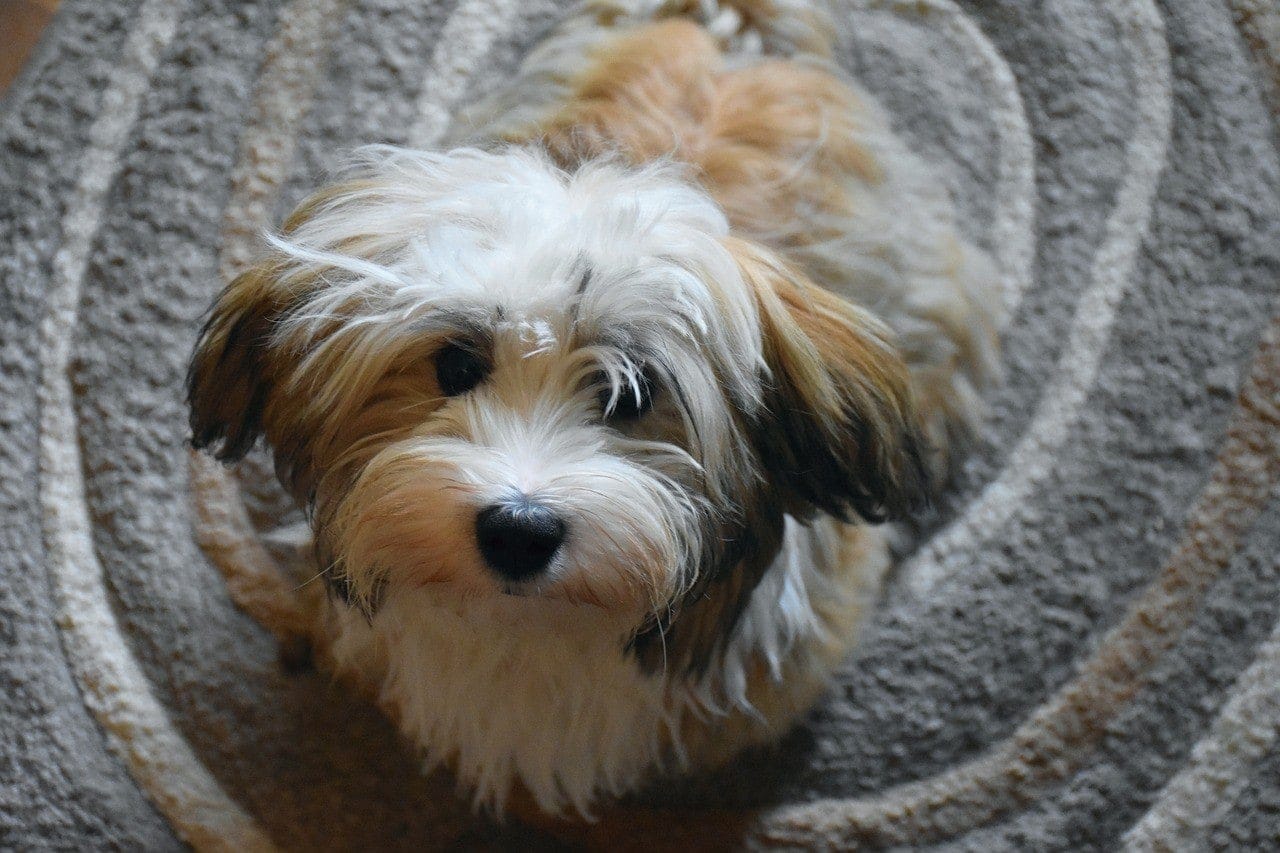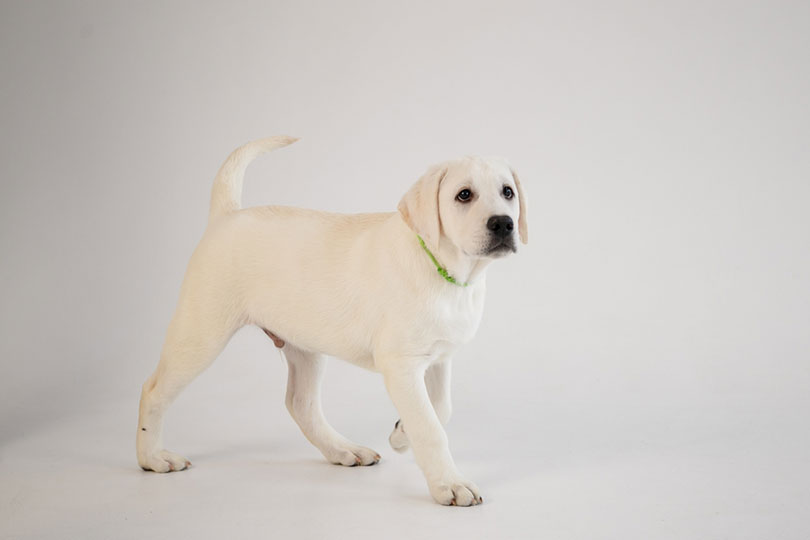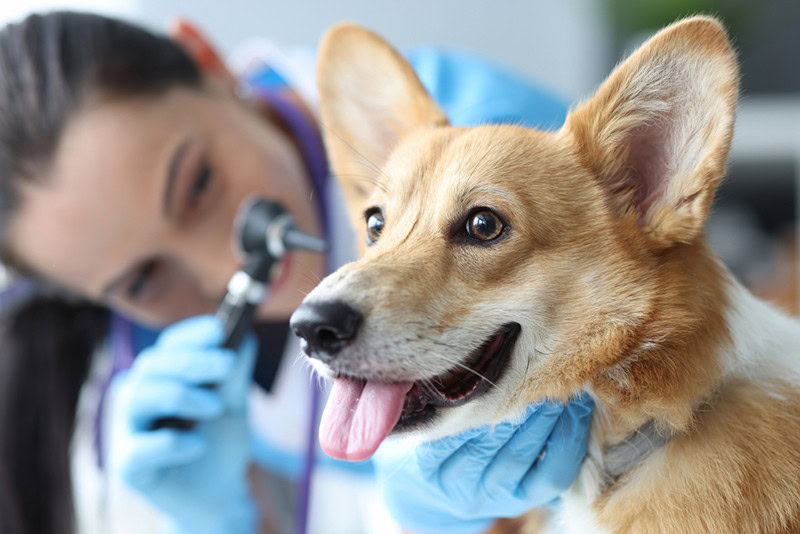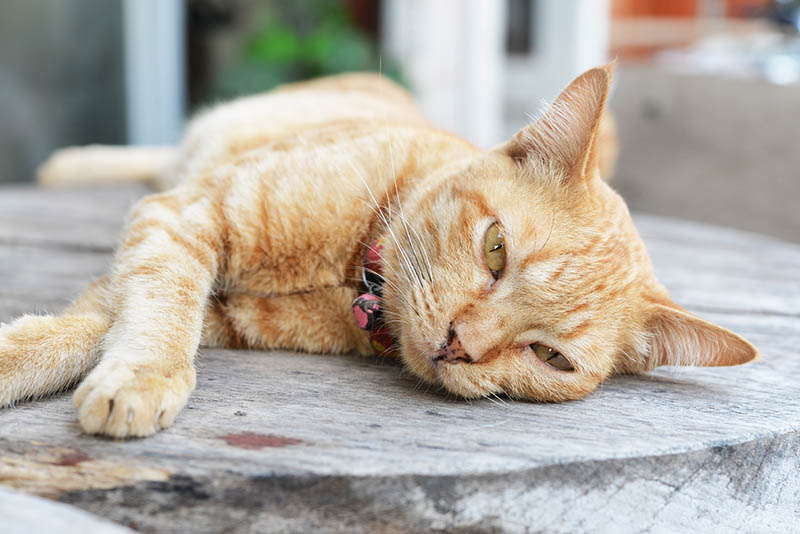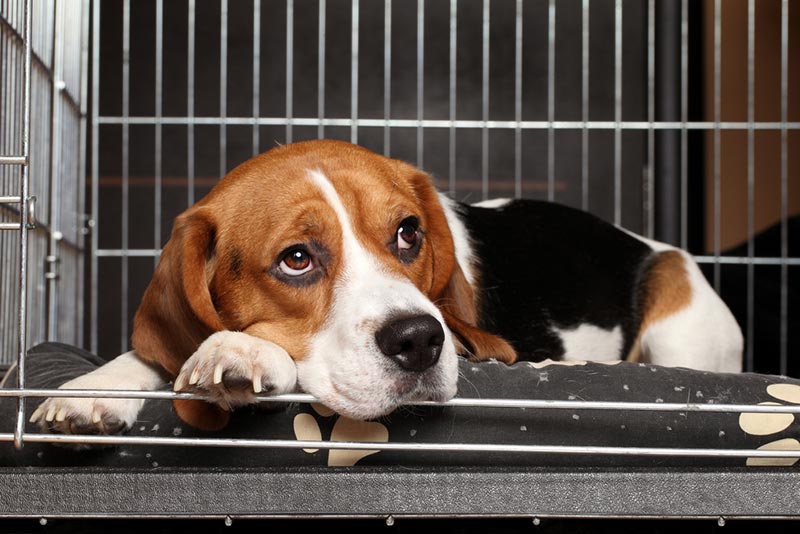My Dog Killed a Groundhog: 10 Tips on What to Do Next

Updated on
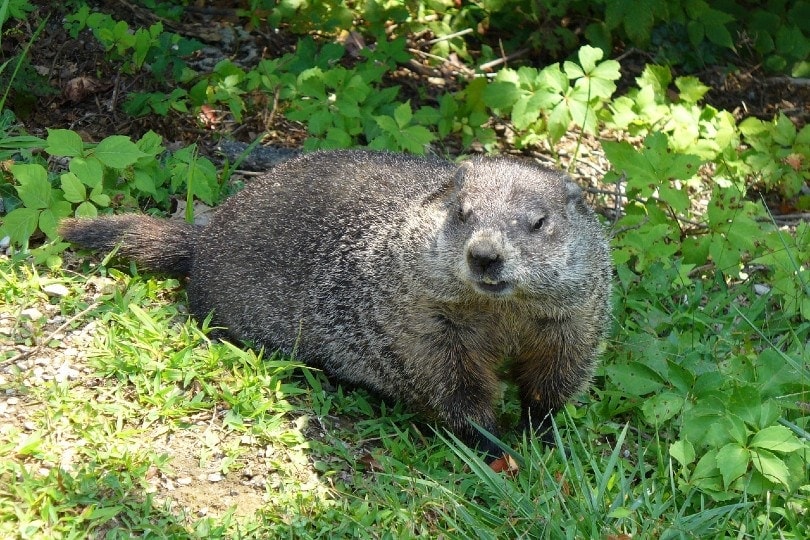
Click to Skip Ahead
If you’re out in your yard with your dog and you suddenly hear a squeal, the chances are your dog has killed an animal. If it’s a groundhog, you might be worried about the consequences. Are groundhogs dangerous to dogs? This article will give you 10 tips on what to do next when you discover a dead groundhog in your yard and how to keep your dog safe in the future.
What Is a Groundhog?
Groundhogs, also known as woodchucks, are rodents native to North America. These hardy rodents are rather large; they have large teeth and razor-sharp claws capable of digging and chewing through wood, so if your dog does get into a scrap with one, they can be easily hurt.
Groundhogs are very intelligent animals capable of forming large social groups and communicating effectively through whistles and squeaks. They also create large underground networks of burrows which can be a nuisance to you as a homeowner as they can quickly destroy a garden.
The 10 Tips on What to Do When Your Dog Killed a Groundhog
1. Separate Your Dog From The Carcass
The first thing to do when your dog kills a groundhog is a separate them from the carcass. This is extremely important as you don’t want your dog to eat it since groundhogs often carry infectious diseases. Suppressing your dog may be an issue, but distraction works wonders.
Try to distract them with a tasty treat, take them into the house, and ensure they’re secured before returning to inspect the remains. If you’ve noticed your dog has eaten any part of the groundhog, make sure to take note of this when you take them to the vet.
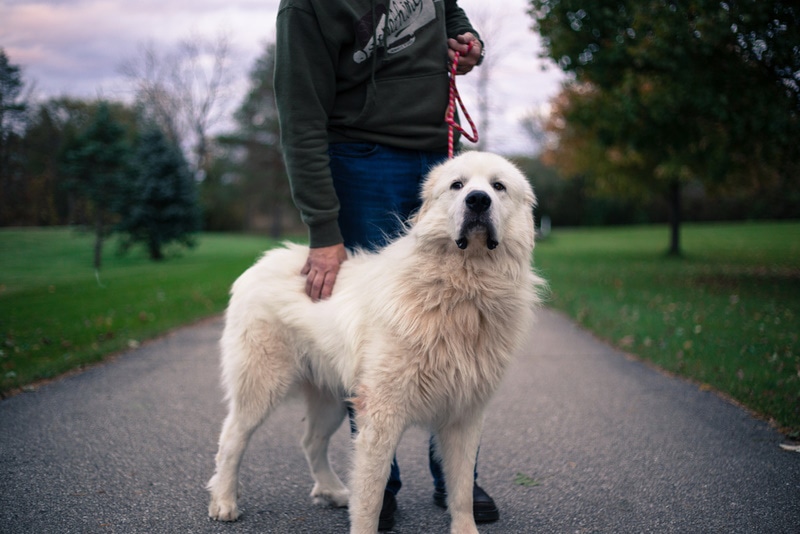
2. Assess Your Dog for Injury or Damage
Dogs, particularly small-breed dogs, often receive cuts and injuries from fights with groundhogs. The most common place dogs get an injury from groundhog fights is, unfortunately, on the face and muzzle because of how face-to-face groundhogs will fight. First, inspect your dog for any cuts, lacerations, or other injuries to ensure they’re not actively bleeding. If they are, apply pressure to the wound and take them straight to the vet.
3. Save the Carcass
This may be unpalatable to some but saving the groundhog your dog has killed is essential. The vet will be able to analyze the corpse for any traces of rabies, which is an infectious disease that often has fatal consequences if left untreated.
Taking it in a bag on ice or in a cool container is best since keeping it as fresh as possible will give you the best chance of identifying any infectious diseases that may have been passed onto your pup.

4. Stay Calm
Staying calm both for your and your dog’s sake is also important. If you panic, your dog can pick up on it; dogs are often very in tune with their owner’s emotions. An excitable dog is not what you need when trying to check them for injuries. Remain calm when transporting your pet to the vet’s office to ensure that the process is as quick and easy as possible.
5. Check Your Dog’s Vaccination Status
If you know your dog is up-to-date with their vaccinations, including the rabies vaccine, you will have less to worry about. Checking their vaccine status is incredibly important; groundhogs carry rabies and other transmittable infections. Taking your dog’s vaccine card with you to the vet is also vital. The vet can have a quick look at all of their vaccines and decide whether or not they will need a booster after coming into contact with the groundhog.
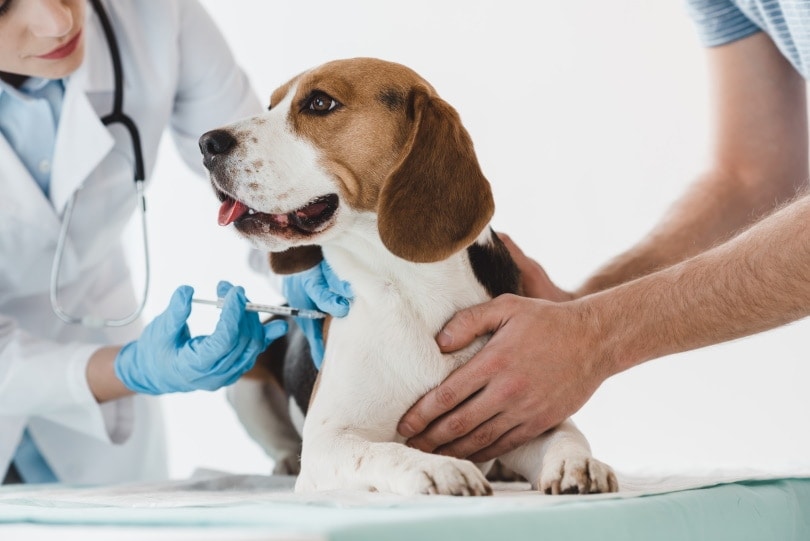
6. Take Your Dog To Their Vet
Taking your dog to the vet can protect it from rabies and tularemia (another infectious disease that groundhogs carry). Your vet will do a thorough examination, look for injuries, and check for any bleeding. Try to be as honest as possible and remember any details; remembering the key details can help your vet to work out a treatment plan for your dog.
If you brought the carcass, explain to your vet why you’ve bought it and ask that it be tested for rabies. If your dog needs a booster for its rabies vaccine, it can be done at the vet’s office with any treatment, such as stitches, wound cleaning, or general advice.
7. Check Your Dog for Fleas and Ticks
Once the vet has given your dog the okay, you can check them for fleas and ticks. Unfortunately, groundhogs carry these external parasites, which can carry diseases such as tularemia, Lyme disease, and rabies. If you discover fleas and ticks, your vet can prescribe medication, and ticks can be taken off by the veterinary assistant at the vet’s office.
It’s vital to deal with these parasites as soon as possible. They cause sore skin rashes and allergic reactions and make your dog miserable if left in place without treatment for too long.
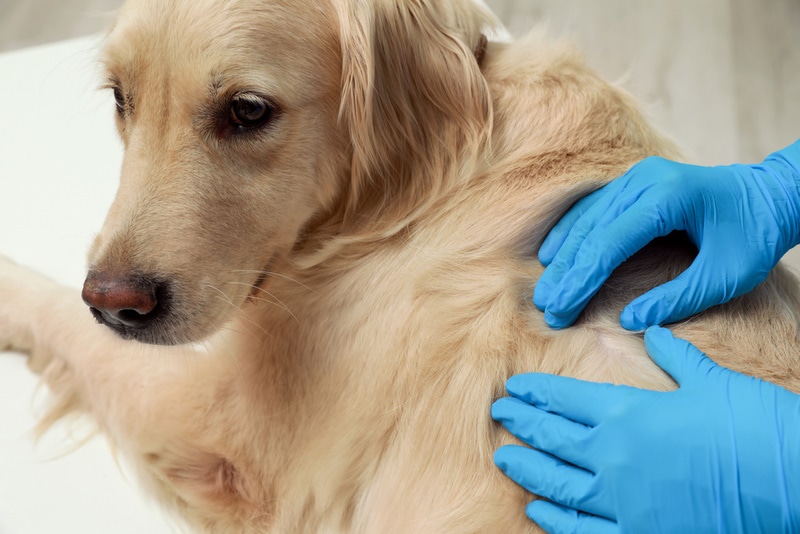
8. Establish Whether You Have an Infestation
Once your dog is back to being healthy, you can examine where it found the groundhog in the first place. Groundhogs are very common throughout the US, and if you’re out on a walk and your dog just got lucky, it’s unlikely to be a frequent problem.
However, if you were in your yard, you may have a groundhog infestation. These can be troublesome, particularly with an extensive network of tunnels, as they can destabilize foundations. If you believe you have an infestation, you can use a deterrent or contact a pest control company.
9. Set Up a Groundhog Deterrent
Deterrents can keep groundhogs away without them. There are a few ways you can deter groundhogs, some of them more effective than others.
- Ammonia: Groundhogs hate ammonia, and it is truly an effective way to keep them away from your yard.
- Garlic and Pepper: Spices such as garlic and pepper can also be sprinkled over the yard. Groundhogs don’t like the scent of these common kitchen ingredients. A generous sprinkling of these, or a concentrated mix with water sprayed in the yard, can help to deter them.
- Chicken wire fencing: This can be used as a final resort. Chicken wire should be buried underneath the ground by at least 12 inches. This will physically stop any woodchuck from getting through; however, because of their powerful jaws and teeth, they may even be able to chew through eventually.
10. Teach Your Dog To “Leave It”
Finally, another more permanent solution is to teach your dog to “leave it.” Dogs are natural hunters, and they all have a strong prey drive. Teaching your dog to leave it alone or to stop pursuing prey is an important step, particularly if you live in an area where groundhogs are common.
Using treats as distractions and making it worthwhile for your dog to stop in their pursuit is the key to successful training.
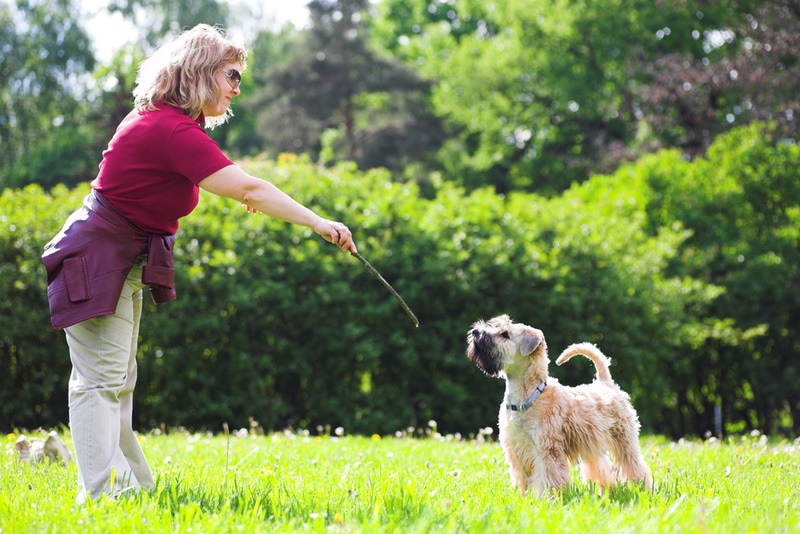
Why Do Dogs Kill Groundhogs?
A groundhog running away presents the perfect opportunity for a dog to flex their hunting muscles. Most dogs have an average prey drive. Some breeds, such as rat terriers or greyhounds, have a stronger urge to hunt. Groundhogs, by nature, will run, and only when cornered do they feel as if they have no choice but to turn and fight.
The Groundhog Is Still Alive, What Do I Do?
If you’ve arrived at a situation where your dog has attacked the groundhog, but it’s still alive, there are a few things you should do. First, you should remove your dog, so they don’t cause any more damage. Secondly, you should be wary of approaching the groundhog in its injured state since it can be vicious.
However, if you have a local wildlife sanctuary or collection group within your area, contacting them should be the first step. They will advise you on what to do and how to approach the situation. They may come to collect the animal to rehabilitate it and hopefully release it back into the wild.
Conclusion
Groundhogs are tenacious little rodents that can cause some serious damage to your dog if they get into a scrap. However, if your dog kills the groundhog, there are certain things you should do to make sure your dog is safe. Checking the dog for injuries, taking them to the vet for a complete check, and ensuring their vaccines are up to date is essential, as groundhogs carry diseases that can be fatal if left untreated, such as rabies.
See also:
Featured Image Credit: LiveLaughLove, Pixabay



